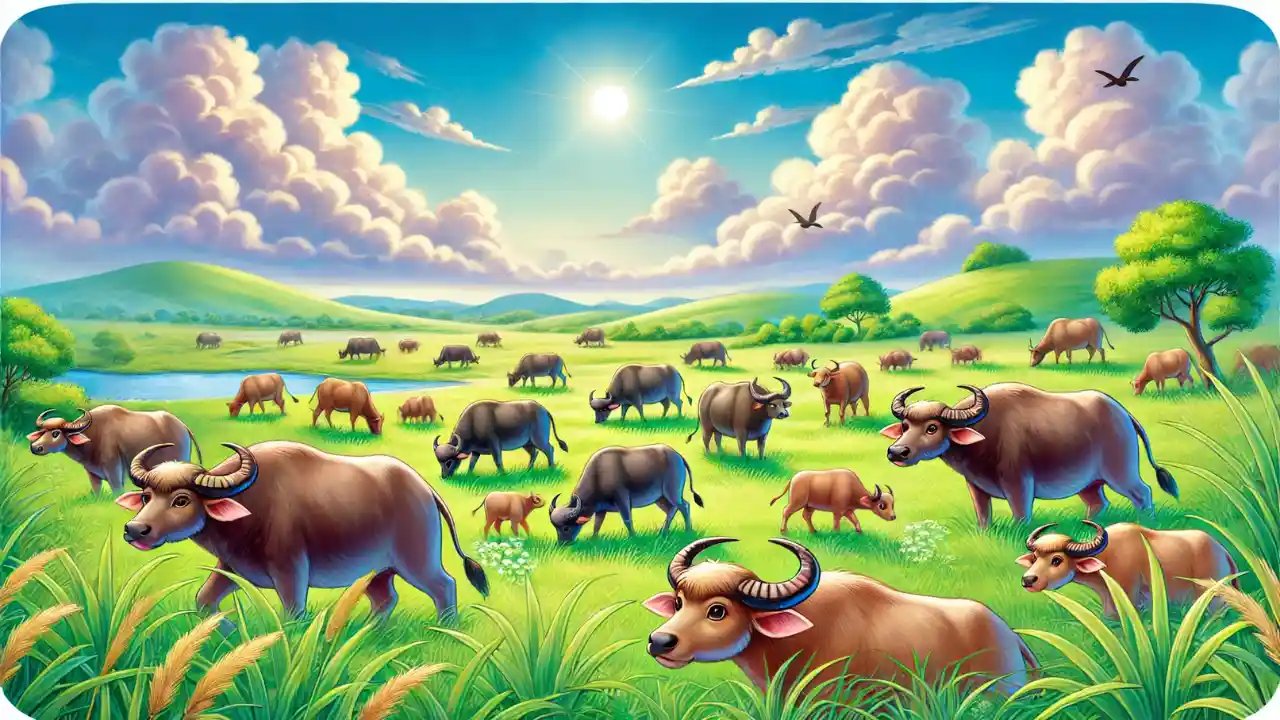When you see a group of wild buffaloes roaming across the plains, grazing together, or moving as one, they are described by a special collective noun. Collective nouns are words used to describe a group of the same type of animals, people or objects. For wild buffaloes, the most common collective noun is a herd. However, there are other creative ways to describe groups of buffaloes too.
Below you will find a table listing some collective nouns for wild buffaloes. Each one is unique and reflects how these majestic animals behave in groups.
Collective Nouns for Wild Buffaloes
| Collective Noun | Group It Refers To |
|---|---|
| Herd of Buffaloes | A large group of buffaloes moving or grazing together |
| Gang of Buffaloes | A smaller or rowdier group of buffaloes |
| Troop of Buffaloes | A less common term for a group of buffaloes |
| Drove of Buffaloes | A group of buffaloes traveling across land in search of food |
| Crush of Buffaloes | Buffaloes packed tightly together, often for protection |
Detailed Explanations and Examples
1. A Herd of Buffaloes
The word herd is the most common collective noun for buffaloes. It reflects how these animals often move together in large groups for safety and grazing.
Examples:
- The herd of buffaloes grazed peacefully on the grassy plain.
- As the sun set, the herd of buffaloes began moving toward the river.
- A herd of buffaloes can cover great distances when searching for food.
2. A Gang of Buffaloes
Gang is an exciting and less traditional way to describe buffaloes. It suggests a sense of strength and unity among the animals.
Examples:
- A gang of buffaloes stood together, watching for any signs of danger.
- The gang of buffaloes charged through the savannah, their hooves thundering.
- Farmers were wary of the gang of buffaloes near their crops.
3. A Troop of Buffaloes
Using troop emphasizes the organized movement and teamwork of buffaloes, much like soldiers on a mission.
Examples:
- A troop of buffaloes crossed the wide river in single file.
- The troop of buffaloes worked together to protect their young from predators.
- Watching the troop of buffaloes in action was an incredible sight!
4. A Drove of Buffaloes
Drove is a word that highlights the movement of buffaloes as they travel across the land in search of food or water.
Examples:
- The drove of buffaloes stirred up dust as they marched across the dry plains.
- Early explorers encountered a drove of buffaloes on their journey.
- A drove of buffaloes passed by the campsite, leaving behind hoofprints in the mud.
5. A Crush of Buffaloes
Crush is a dramatic term that describes buffaloes when they gather very closely together, often when startled or protecting themselves.
Examples:
- The crush of buffaloes gathered tightly when they sensed a predator nearby.
- During the storm, a crush of buffaloes sheltered under the tall trees.
- The tourists were amazed to see a crush of buffaloes in the distance.
Conclusion
Learning about collective nouns is a fun way to expand your vocabulary and better understand the world around us. For wild buffaloes, words like herd, gang, troop, drove, and crush describe how these majestic animals gather and move together. Each collective noun paints a unique picture of buffaloes in their natural habitat, whether grazing peacefully, traveling across the plains, or standing together for protection.
Next time you see a group of buffaloes in a documentary or read about them in a book, you’ll know just the right words to describe them Keep exploring collective nouns to discover more about the fascinating ways we describe the animal kingdom.
